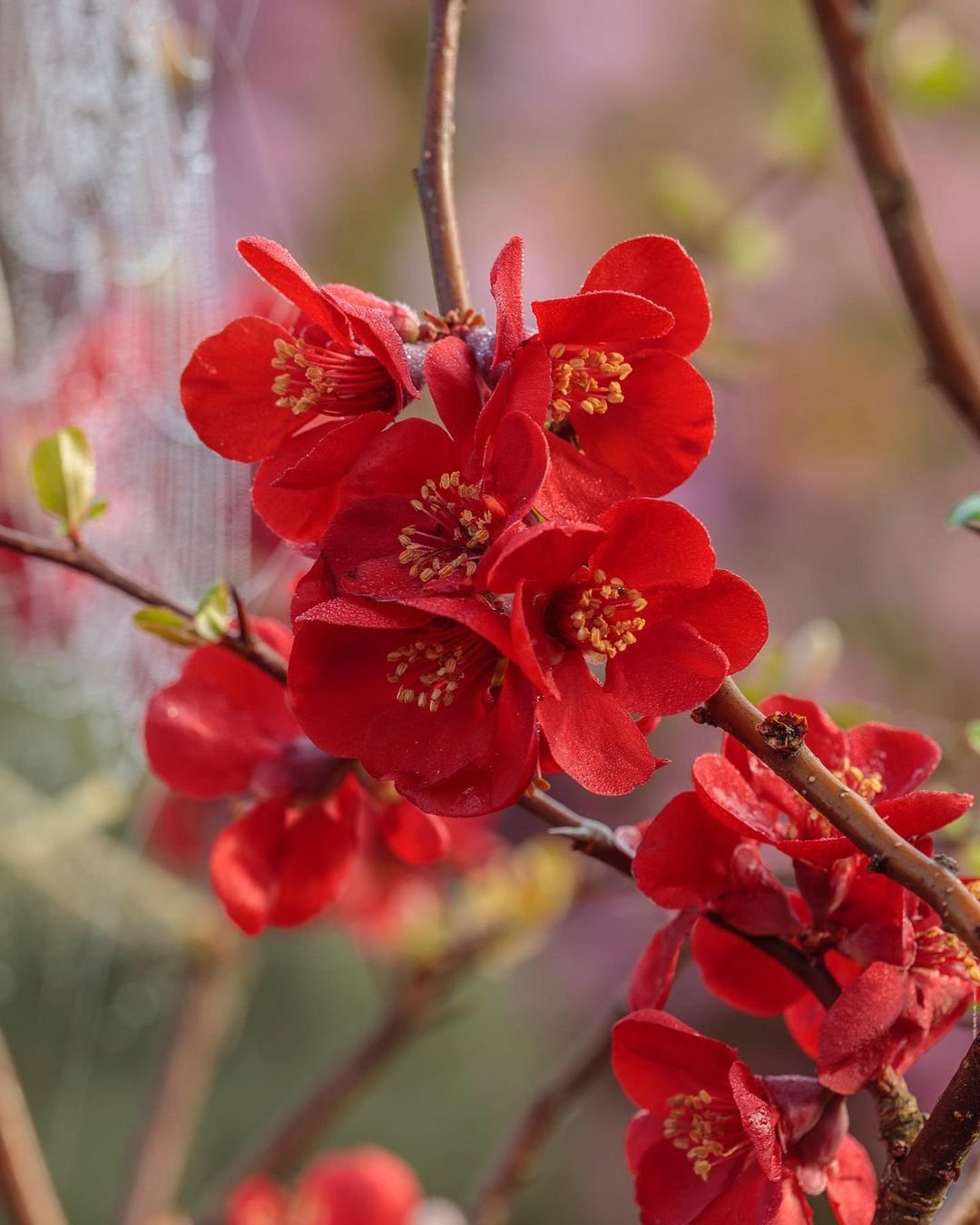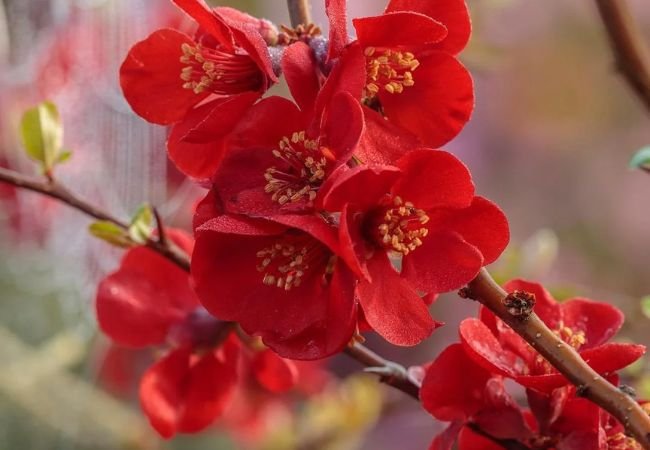Discover the vibrant world of Flowering Quince! Learn how to grow these early-blooming shrubs, their varieties, and why they’re a must-have for spring gardens.
Hey there, garden buddies! Ever seen those shrubs that seem to wake up way before everything else, bursting with flowers when most plants are still hitting the snooze button? That’s flowering quince for ya – the overachiever of the spring garden.
Here’s the information chart for the Flowering Quince:
| Aspect | Details |
|---|---|
| Botanical Name | Chaenomeles speciosa (for Common Flowering Quince) |
| Common Name | Flowering Quince |
| Plant Zone | Zones 4-9 (USDA) |
| Sun Exposure | Full sun to partial shade |
| Soil Type | Well-draining soil, adaptable to various soil types |
| Watering | Moderate, drought-tolerant once established |
| Growth Habit | Deciduous shrub, spreading |
| Height/Spread | 3-10 feet tall, 3-10 feet wide |
| Special Features | Early spring blooms, red, pink, white, or orange flowers, thorny branches, attracts pollinators, can produce small edible fruits |
So, What’s the Deal with Flowering Quince?

Picture this: It’s barely spring, most of your yard still looks like a winter wasteland, and BAM! This shrub decides it’s party time, exploding with flowers. That’s flowering quince in a nutshell. It’s like that friend who’s always way too eager for breakfast at 6 AM.
These tough little shrubs originally hail from Asia, but they’ve made themselves right at home in gardens all over. And let me tell you, they’re not shy about showing off.
Colors? Oh Boy, Do They Have Colors!
We’re talking the whole spring rainbow here:
- Reds that’ll make your eyes pop
- Pinks softer than your grandma’s favorite sweater
- Oranges that look good enough to eat
- Whites so pure they’d make snow jealous
And get this – some fancy varieties even have double flowers. It’s like they’re wearing tutus!
Growing These Show-offs
Here’s the best part – these shrubs are pretty chill about growing conditions. They’re like the low-maintenance friend of the plant world.
Sun and Dirt
- They’re not picky eaters – most soil’s fine as long as it’s not soggy.
- Sun or part shade, they’re cool either way.
Planting
- Spring or fall, take your pick.
- Give ’em some elbow room – about 4-6 feet apart.
Taking Care of Business
- Water ’em good the first year.
- After that? They can handle a bit of drought. Tough cookies, these ones.
- Give ’em a haircut after flowering if they’re getting unruly.
What to Do with ‘Em
Flowering quince is like a Swiss Army knife of shrubs:
- Want a hedge that’ll keep out nosy neighbors? Check.
- Need a spotlight plant to show off? You got it.
- Filling out a shrub border? They play well with others.
- Fancy some early spring blooms for a vase? Snip away!
Nature’s Buddies
These shrubs aren’t just pretty faces. They’re like an all-you-can-eat buffet for bees when not much else is blooming. Birds love to hide in ’em too. And those little fruits? Birds think they’re candy.
When Things Go South
Look, even the best plants have bad hair days:
- Sometimes they catch fireblight. It’s as nasty as it sounds.
- Leaf spot might show up if things get too damp.
- Japanese beetles might try to turn the leaves into an all-you-can-eat salad bar.
But don’t sweat it too much. Most of the time, these shrubs are tougher than a two-dollar steak. If you need tips on dealing with garden pests, check out the EPA’s guide on integrated pest management.
Wrapping It Up
So there you have it, folks. Flowering quince: the early bird, the show-off, and the tough guy all rolled into one awesome shrub. Whether you’re a garden newbie or a green-thumb pro, these plants are a great way to kick off spring with a bang.
Remember, gardening’s all about having fun and trying new things. So why not give flowering quince a shot? Who knows, it might just become your new favorite spring fling! And hey, if you want to learn more about creating a wildlife-friendly garden, the National Wildlife Federation has got your back.
For more gardening tips and plant care guides, visit usagardenhub.com.


1 Comment